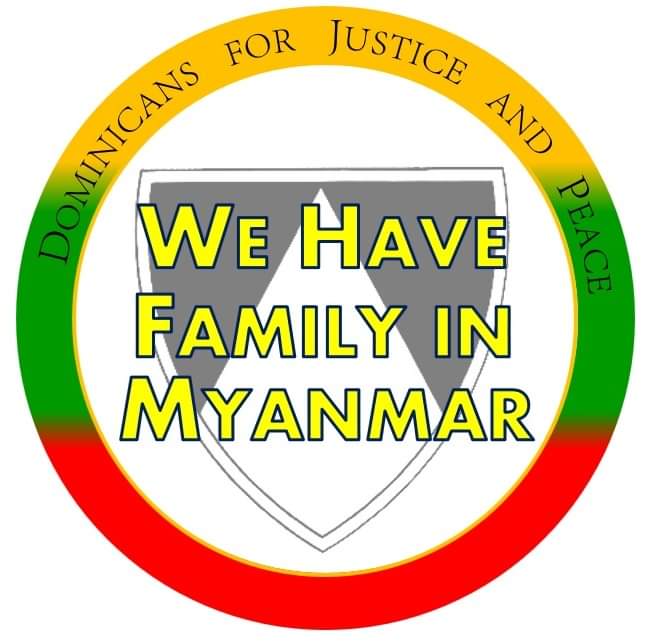Dominican Month for Peace 2022
Myanmar (formerly Burma) is a Southeast Asian nation of more than 100 ethnic groups, bordering India, Bangladesh, China, Laos, and Thailand. Yangon (formerly Rangoon), the country’s largest city, is home to bustling markets, numerous parks and lakes, and the towering, gilded Shwedagon Pagoda, which contains Buddhist relics and dates to the 6th century.
Capital: Naypyidaw Population: 54.41 million (2020) World Bank
Click here for more information on Myanmar.
Myanmar’s people and history are a glorious mishmash of settlers and invaders from all fronts. The Mon and the Pyu peoples are thought to have come from India, while the now dominant Bamar migrated through Tibet and, by 849, had founded a powerful kingdom centered on Bagan. (Mandalay Region) The Bagan Kingdom was the first Burmese kingdom to unify the regions that would later constitute modern-day Burma, later renamed to Myanmar. For the next millennium, the Burmese empire grew through conquests of Thailand and India and shrank under attacks from China and internal rebellions.
TIMELINE OF BURMESE HISTORY
500 BCE Iron working settlements
180 BCE beginning of Pyu city-states: Between the 1st century BCE and the 9th century CE, speakers of Tibeto-Burman languages known as the Pyu established city-kingdoms
200 CE The Pyu convert to Buddhism
832 Pyu city-states destroyed by Nanzhao (Tai kingdom/southern China)raids
849–1297 The Kingdom of Pagan was the first Burmese kingdom to unify the regions that would later constitute modern-day Myanmar.
1277- The first Mongol (an East Asian ethnic group native to Mongolia) invasion followed by the Pinya Kingdom. Other Kingdoms included Ava, Prome,Mongol, Pagan, et. al.
1385 Forty Years’ War
1527 Confederation of Shan States
1547 First Burmese invasion of Siam begins. Siam becomes Burmese vassal until 1584
1600 Portugal ascends with Burmese Army – introduces Catholicism and attempts to
destroy Buddhism. Civil war ensues
1619-1677 English East India Company and Dutch India Company establish their presence
1824 Start of First Anglo-Burmese War
1885 Third Anglo-Burmese War; end of Burmese monarchy. Burma is proclaimed a British colony.
1937 Burma is separated from British India and becomes a separate colony
1941 Burma Independence Army formed with Japanese help
1945 Return of British rule
1947 Panglong Agreement: independence from the British[
1947 Constitution guarantees the Federated Shan States
1948 Burma gains independence from the United Kingdom with U Nu as Prime Minister
1950 Insurgencies begin Burmese Army repels Nationalist Chinese invasion of Shan State (to 1961)
1960 U Nu’s party faction wins decisive victory in 1960 elections, but his promotion of Buddhism as the state religion and his tolerance of separatism angers the military.
1961 U Thant was a Burmese diplomat and the third secretary-general of the United Nations from 1961 to 1971, the first non-Scandinavian to hold the position. He held the office for a record 10 years and one month.[b]
1962 Democratically elected government of U Nu is overthrown by Ne Win, who abolishes the federal system and inaugurates “the Burmese Way to Socialism” – nationalising the economy, forming a single-party state with the BSPP as the sole political party, and banning independent newspapers. Government guns down student protesters
 USA
USA




